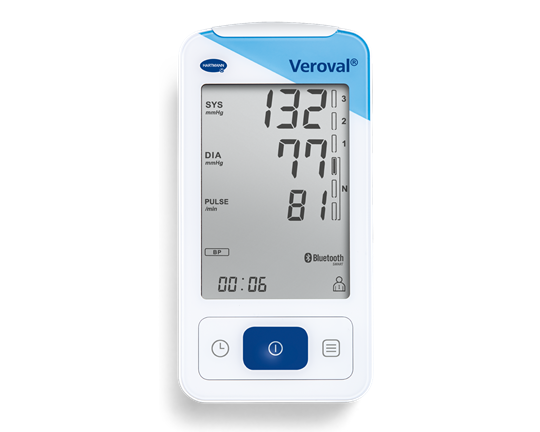Atrial Fibrillation and the increase of Stroke risk


Stroke is a very common cause of death in the Middle East, but the good news is that 80% of strokes are preventable!1
In 2019, the World Health Organization found that Stroke is the #2 cause of death in Saudi Arabia, United Arab Emirates, Oman and the #3 cause of death in Kuwait, Qatar and Bahrain.2
The biggest risk factor for developing Strokes is related to cardiac arrhythmias with the Atrial Fibrillation being the most frequent type. Atrial Fibrillation is not a direct life-threatening arrhythmia, but it indicates a 5 TIMES increased risk of Stroke!3,4
When a person has Atrial fibrillation, the beating in the upper chambers of the heart becomes irregular, and blood doesn't flow as well as it should to the lower chambers of the heart. This means that the heart beats unevenly and can lead to blood clotting that will cause the stroke to happen.
The challenge is that Atrial fibrillation, the most common type of cardiac arrhythmia, can be silent in 15% to 30% of the cases 5,6. It takes years to develop from ‘silent’ Atrial fibrillation to ‘persistent5,6 and can have a triad of symptoms of racing heart, shortness of breath and dizziness…7
Therefore, a lot of people rarely feel their arrhythmia and it may come in a clustered way with several weeks in between which makes it very hard to detect!
That’s why, having the mobile Veroval® 2 in 1 ECG and Blood Pressure Monitor at your fingertips can make the heart assessment quick and easy thanks to repeatedly intermittent ECG recording at home allowing sporadic rhythm abnormalities to be detected the moment they happen!

1. ASA American Stroke Association ‘About Stroke’ accessed: 2022-08 22,https://www.stroke.org/en/about-stroke
2. www.who.int/data/gho/data/themes/mortality-and-global-health-estimates/ghe-leading-causes-of-death
3. Go, A S et al. “Prevalence of diagnosed atrial fibrillation in adults: national implications for rhythm management and stroke prevention: the Anticoagulation and Risk Factors in Atrial Fibrillation (ATRIA) Study.” JAMA vol. 285,18 (2001): 2370-5. doi:10.1001/jama.285.18.2370.
4. Miyasaka, Yoko et al. “Secular trends in incidence of atrial fibrillation in Olmsted County, Minnesota, 1980 to 2000, and implications on the projections for future prevalence.” Circulation vol. 114,2 (2006): 119-25. doi:10.1161/CIRCULATIONAHA.105.595140
5. Rienstra, Michiel et al. “Symptoms and functional status of patients with atrial fibrillation: state of the art and future research opportunities.” Circulation vol. 125,23 (2012): 2933-43. doi:10.1161/CIRCULATIONAHA.111.069450
6. Boriani, Giuseppe et al. “Asymptomatic atrial fibrillation: clinical correlates, management, and outcomes in the EORP-AF Pilot General Registry.” The American journal of medicine vol. 128,5 (2015): 509-18.e2. doi:10.1016/j.amjmed.2014.11.026.
7. American Heart Association (c2021) „FAQs of Atrial Fibrillation“ accessed: 2021-01-28, www.heart.org/en/health-topics/atrial-fibrillation/afib-resources-for-patients--professionals/afib-awareness.
Double alert for stroke prevention

With the mobile Veroval® ECG and blood pressure combination device you can record your heart rhythm anywhere and anytime, and also measure your blood pressure.